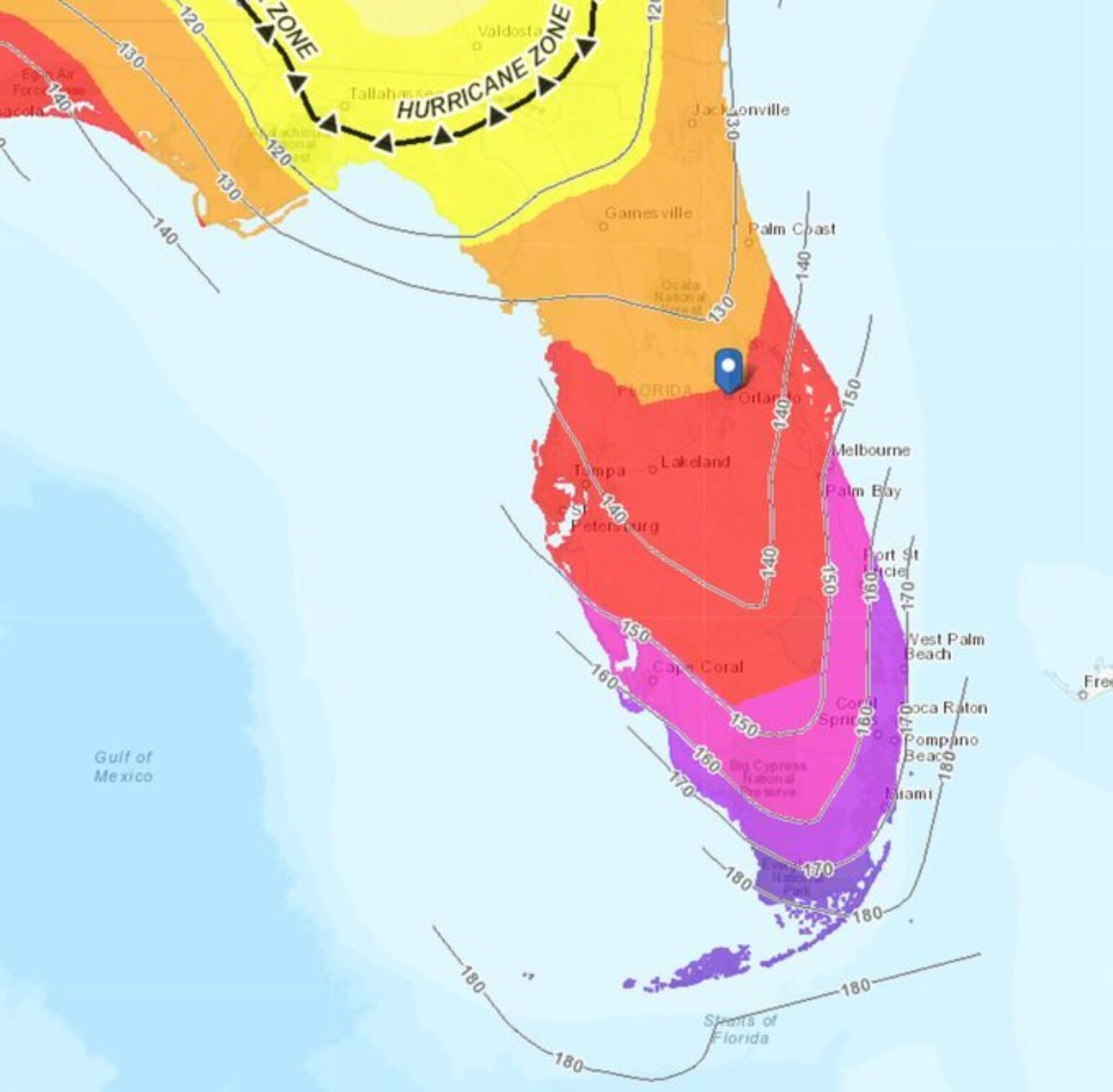
There has been no significant change since yesterday to the overall favorable environment for further intensification between now and Sunday. Moisture availability will steadily increase, shear will remain in the range that may help ventilate a hurricane, and ocean heat content is robust along the full track and highest in the Gulf Stream waters that Dorian will encounter just prior to expected landfall. However, if Dorian slows, this might create some upwelling and weaken the hurricane. This is still uncertain.
When I give talks about weather trends, I often lead with a slide that suggests our weather memories are very short. When I look at the forecast for Dorian, I see a bit of déjà vu in how similar this forecast is to the evolution that occurred with Hurricane Florence last year. Remember, initially, the forecast for Florence was for a more rapid track with major hurricane status at landfall. But, the forecast models later reflected Florence stalling along the Carolina coastline with a bit of a west-southwest component of motion. Not only did the track have a notable change, but this slowing also caused Florence to weaken just prior to landfall, likely due to upwelling of colder ocean water. Whether or not this could happen with Dorian is a big question. Right now the NHC is not forecasting a weakening at landfall, but until 24 hours before Florence made landfall there was no sign of weakening either. At this point, the insurance industry should prepare for Dorian to make landfall as a major hurricane, as this is what the best model guidance and forecasts are indicating at this time.
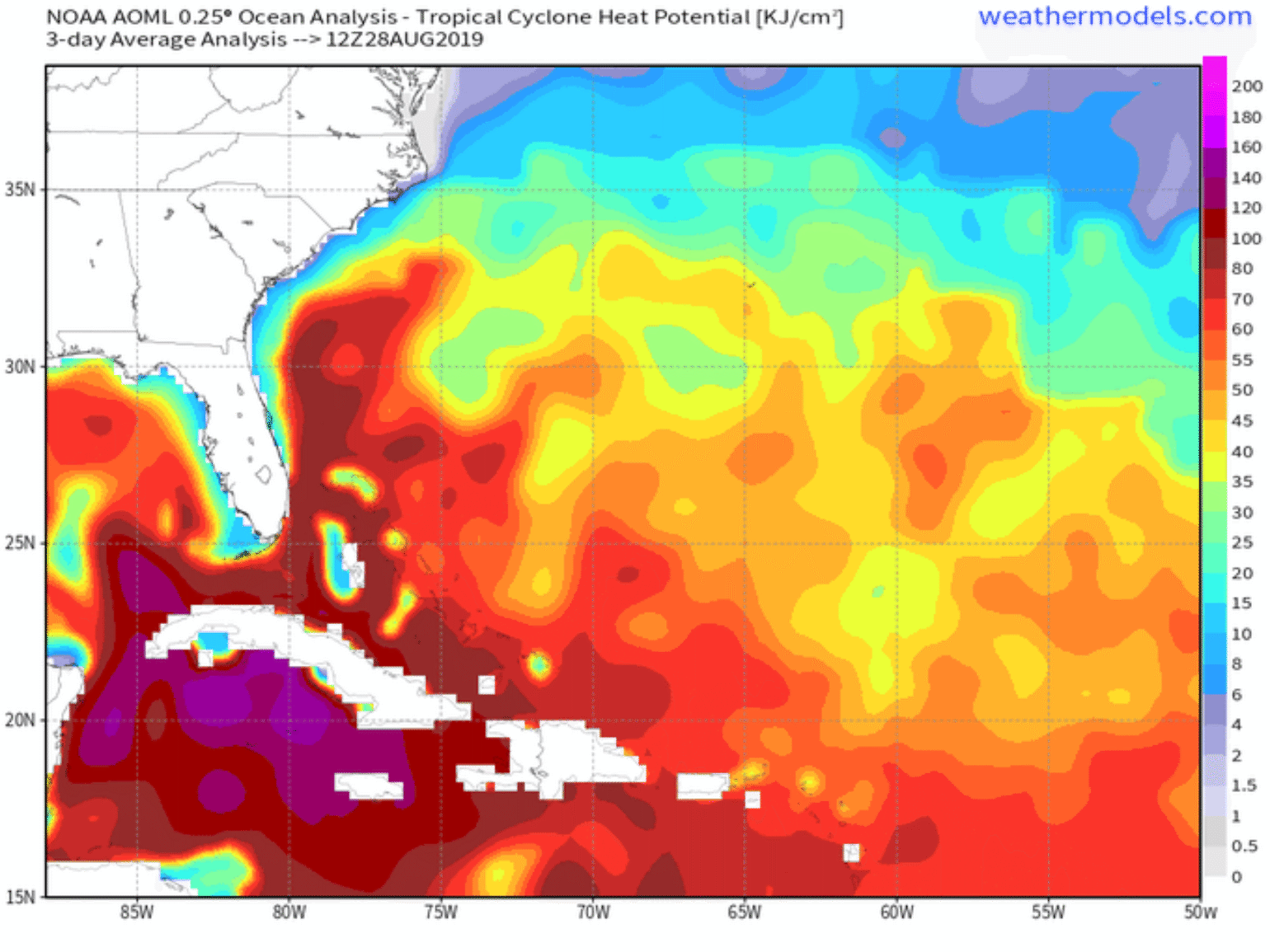
Similarly to Hurricane Florence last year, there is still a considerable amount of track uncertainty in both the direction and the forward speed of the storm which, again, could impact the intensity. Over the next few days, Dorian will continue to track northwest, but will begin to arc westward later today as it moves north of an upper-level low near Cuba and the Bermuda high strengthens and expands to Dorian’s north. Models are in agreement on the timing of the turn west or, depending on some models, even west-southwest. What happens later tomorrow is still uncertain as the models disagree on how far west Dorian will track and at what forward speed.
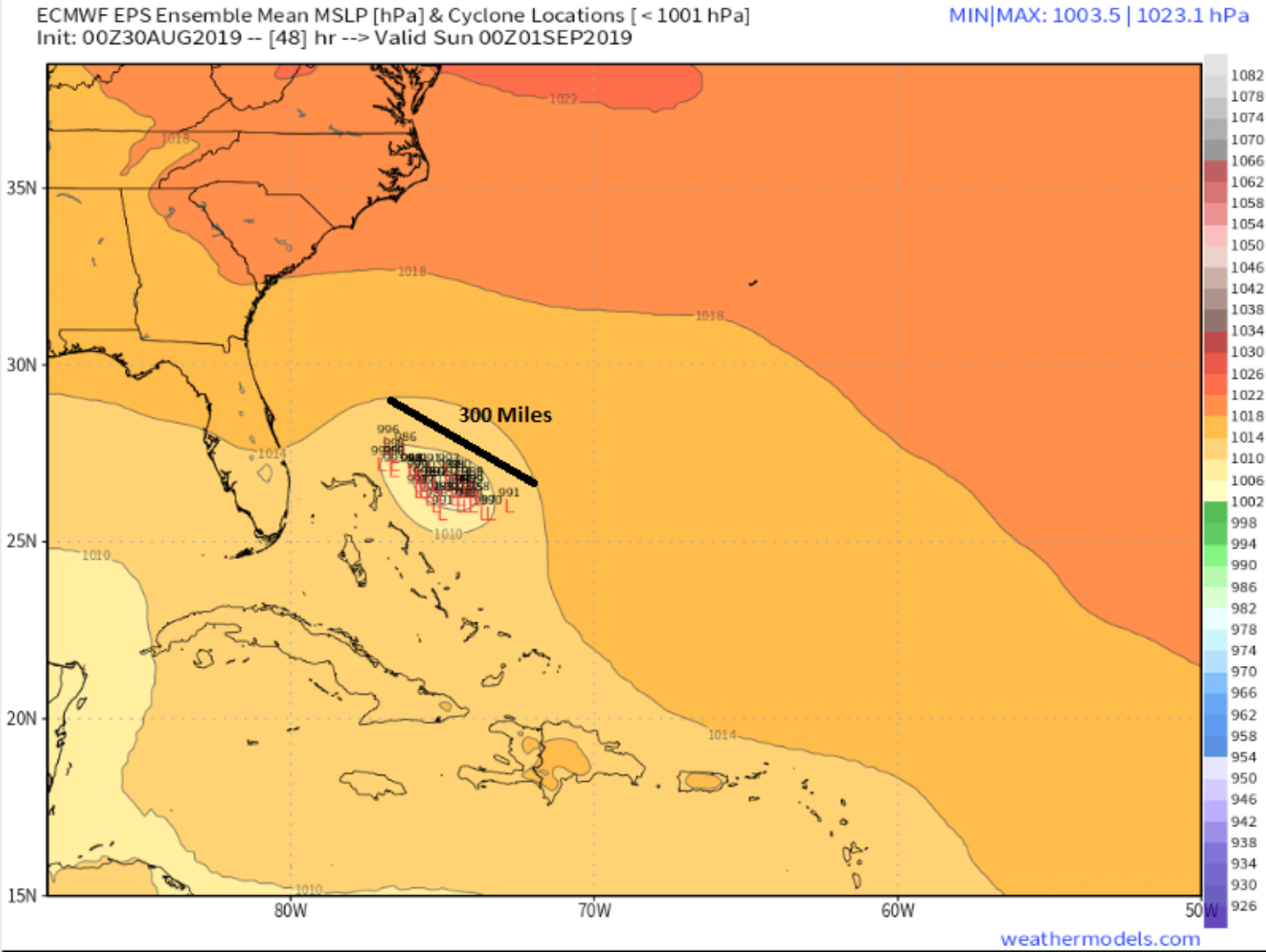
If you have been watching the NHC forecast, which, as I pointed out yesterday, is one of the best to review, the track speed and timing of landfall has been slowing. Earlier in the week, landfall was expected to be Sunday - now it’s Monday night. Slow moving named storms often precede erratic behavior or sharp turns, so what this trend in the NHC track really means is increased forecast uncertainty. There is still a chance that Dorian may stay offshore, similar to Hurricane Matthew in 2016. I am a bit doubtful of this, however, given that climatology and weather models typically seem to forecast the western Atlantic high pressure as weaker than it really is. The majority of forecasts have Dorian making landfall as a Category 3 or 4 hurricane near Palm Beach, Martin or Saint Lucie counties. This would put Dorian in a similar landfall area to Hurricane Jeanne, which made landfall as a Category 3 hurricane in 2004 and, today, would cause about $8B in insurance loss.
All the impacts below are all dependent on the track and intensity.
Wind Impacts
When analyzing wind impact, it is important to understand the design of typical structures across Florida to withstand high wind speeds. The following is a great online interactive map. It should be noted that older structures would have slightly different wind speed thresholds depending on the era, but generally, the trend would be similar to what is shown below.

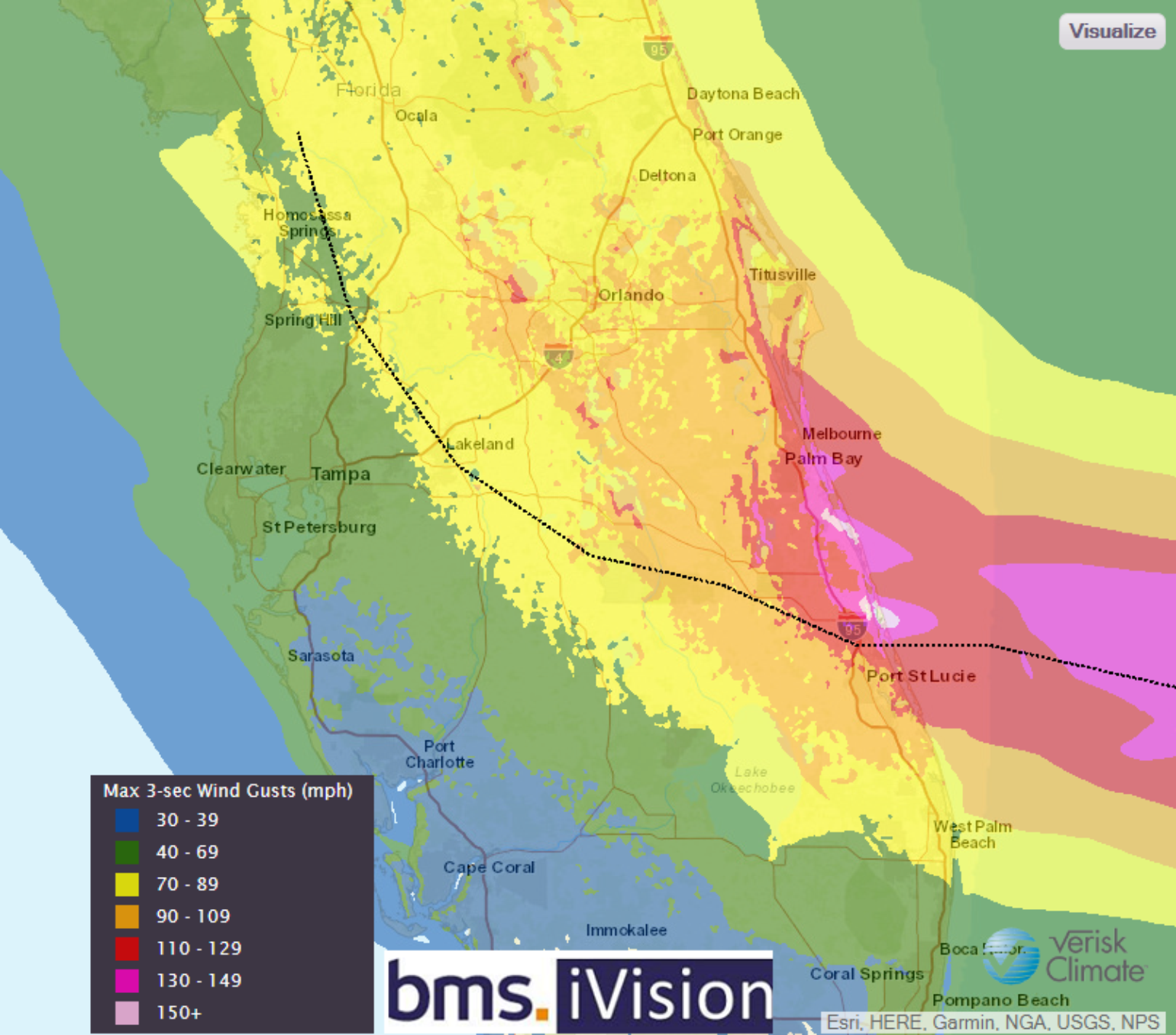
Flood Impacts
The trend towards slower motion near or over Florida compounds flooding potential for the state. Dorian’s forecasted landfall intensity is capable of producing structural wind damage and life-threatening coastal surge, but the rising possibility of the hurricane traveling along or up the peninsula at 5-10 mph means widespread rainfall totals of 10 inches or more, especially north and east of the center track. This may be a major issue for the insurance industry.
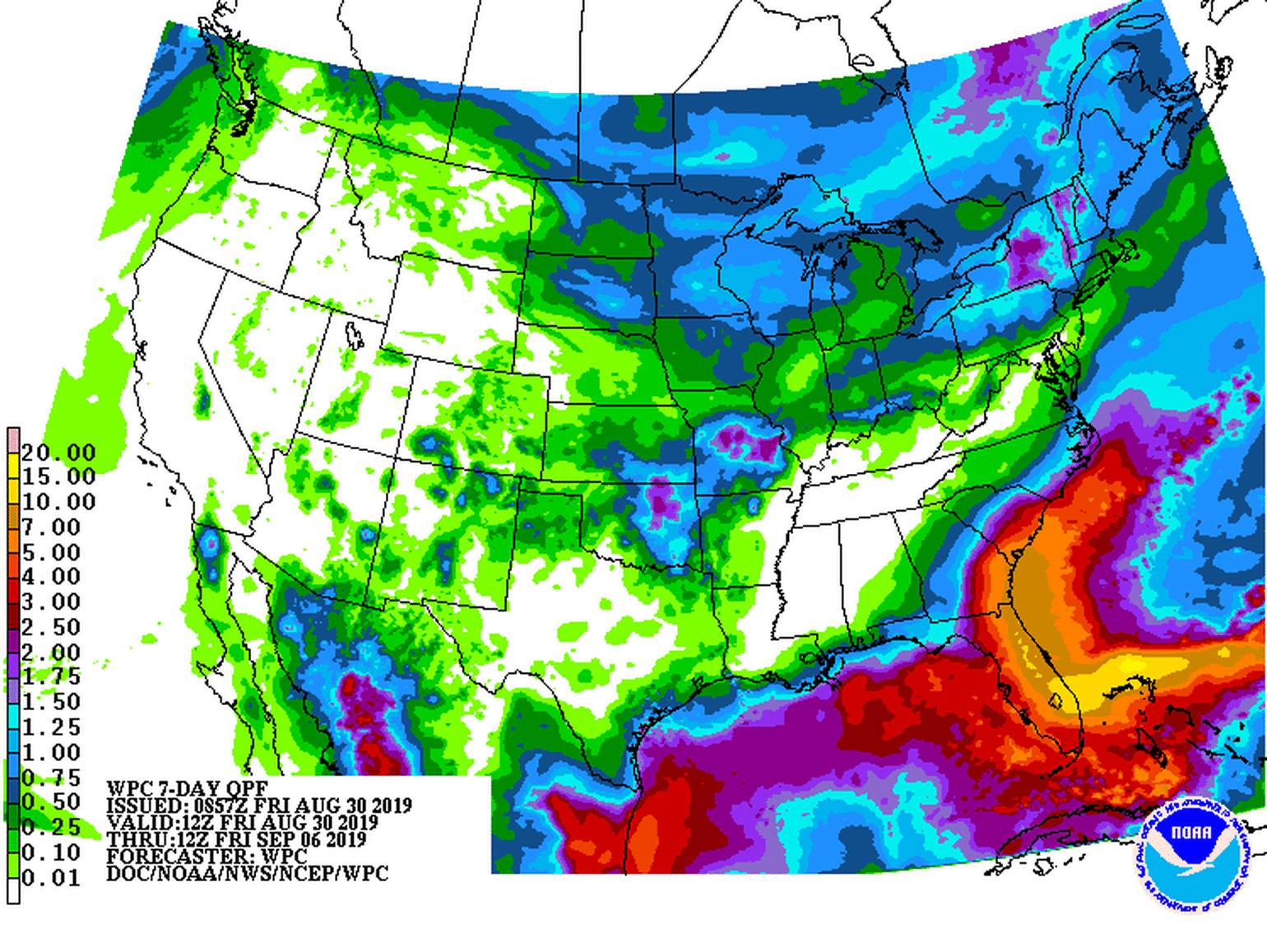
The American Community Survey (2011-2015), estimates that 26% of Florida residents live in the combined 100-year and 500-year flood plains, as indicated by NFIP. The risk of damage from floodwater is real and growing in a large percentage of the U.S. and even more so in Florida.
The private residential market has grown quite rapidly in Florida, too. There are more private flood carriers active in Florida than in any other state. As of July 2018, there were 29 admitted insurers offering primary residential flood insurance in the state, up from 20 in December 2017, and 16 in December 2016. There are also many managing general agencies (MGAs) in Florida that offer flood coverage.
In fact, according to a recent Wharton Risk Management flood market study, there are more than 58,000 private primary residential flood policies across Florida. With that total, there are more private residential flood policies in Florida than there are NFIP policies in 35 different states, including Alabama, Pennsylvania, Illinois, and Washington.
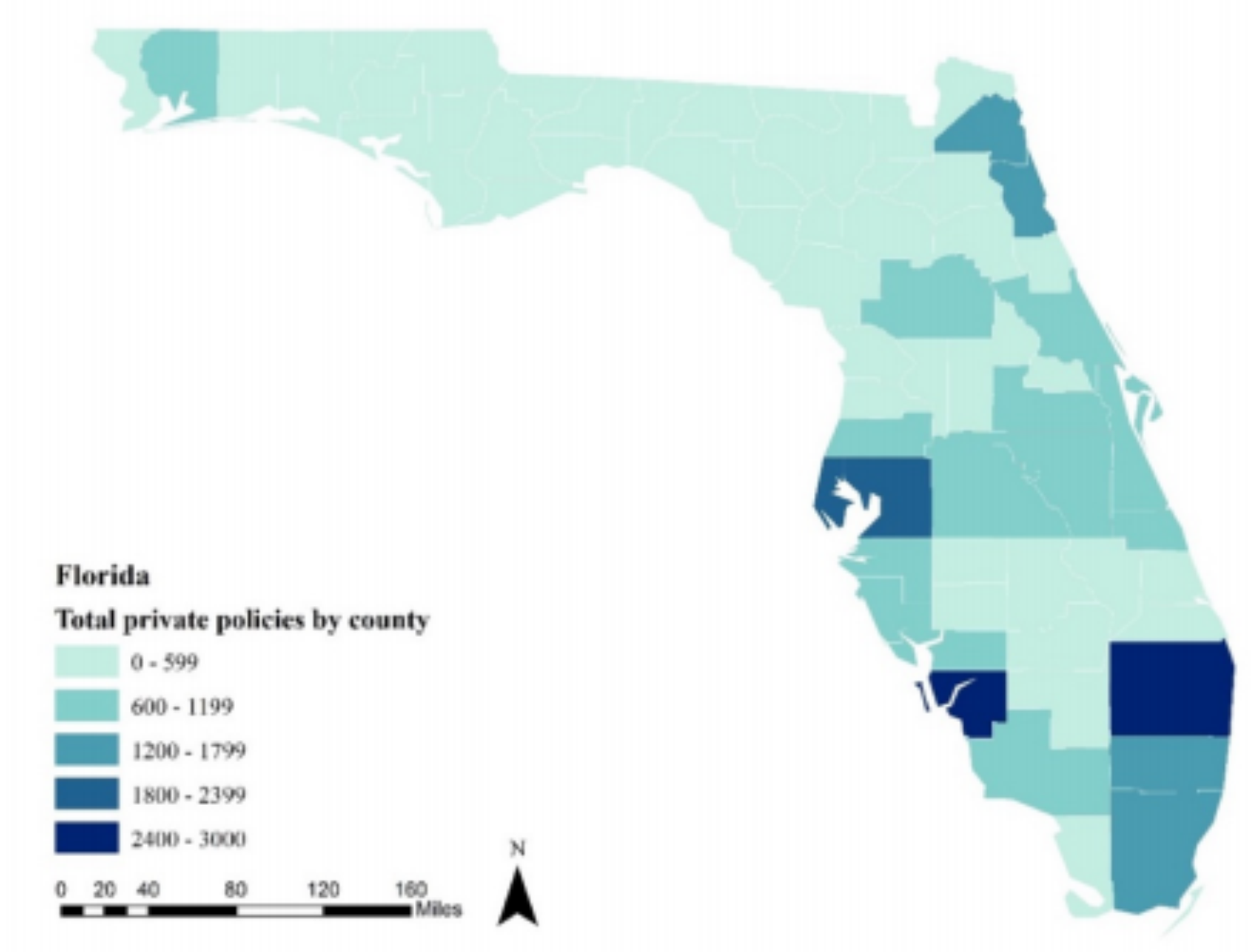
Given the current forecast of Dorian, this could be the first real test of the residential flood insurance market.
The forecast is suggesting increased confidence that a Florida landfall will be perpendicular to the coastline. This aspect will be important in relation to the storm surge and may result in higher wind impact inland. However, the overall track will determine the wind.
There is a high likelihood that the impact of Dorian will be felt along the entire East Coast, but will be drawn out over the next week as Dorian slowly gets pulled away from Florida into the mid-latitudes. This will increase the insured loss chances of states outside of Florida. A few additional things to consider as Dorian approaches the Florida Coastline:
- Soil moisture is already high across much of the state, which could increase tree fall and power outages.
- With a new Super Moon occurring today, current tides will be running higher than normal, which could increase coastal flooding and any intensify aspects of storm surge that might occur.
- With Dorian potentially making landfall over a holiday weekend, the amount of lost revenue from hotel and restaurants has the potential to be higher, which could increase business interruption in some cases.
